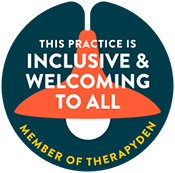Social anxiety can be an overwhelming and isolating experience, causing individuals to avoid situations that may trigger feelings of nervousness, embarrassment, or self-consciousness. Fortunately, one of the most effective treatments for social anxiety is exposure therapy. This therapeutic approach involves gradually and systematically exposing yourself to social situations in a controlled and supportive environment, helping you confront your fears without avoidance. Over time, this process helps to reduce anxiety, build confidence, and challenge the negative thought patterns that fuel social fears.
Exposure therapy works by allowing individuals to face their anxieties step by step, starting with less intimidating situations and slowly progressing to more challenging scenarios. This gradual exposure helps desensitize the individual to the feared stimuli, ultimately allowing them to experience social interactions without feeling overwhelmed. By practicing in real-world contexts, individuals can reframe their perceptions of social situations and learn that their fears are often exaggerated. Through consistent exposure and the guidance of a trained social anxiety therapist at Anchor Therapy, individuals with social anxiety can build the tools needed to navigate social environments with greater ease and comfort.


















